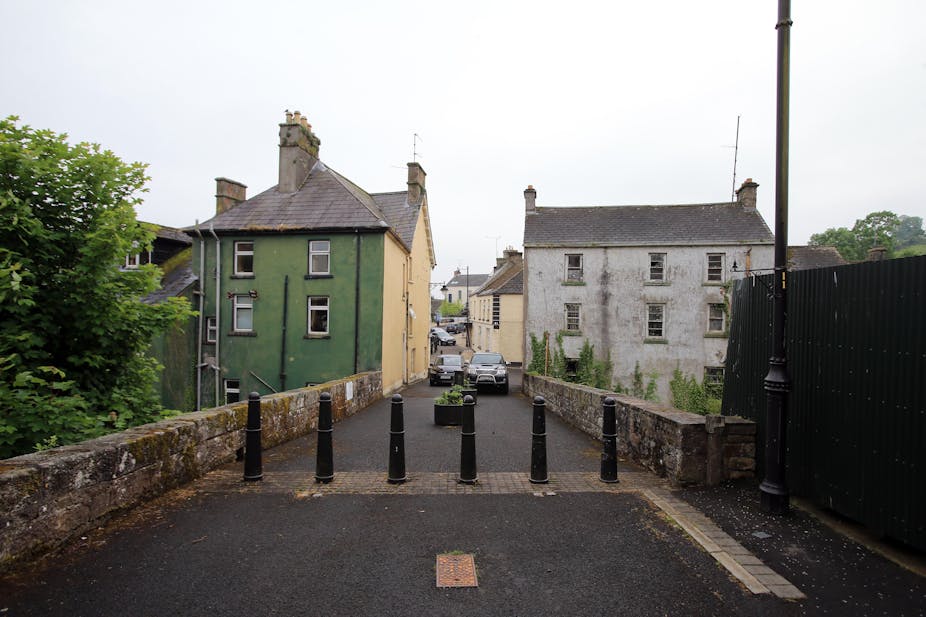The prevailing wisdom concerning Brexit and the Irish border is that it’s an impossible trilemma. A solution will either disappoint the Brexiteers (if the UK essentially remains in the customs union), the unionists in Northern Ireland (if a border is placed in the Irish Sea), or Irish nationalist opinion (if there is any semblance of a north-south border).
The UK government meanwhile seems to be going through a form of collective grieving: first denial of the difficulty of resolving the border issue via technology solutions, then anger and accusations that the Irish government was taking a hard line on the border for political gain.
Now Whitehall seems to accept that it needs to come up with some creative alternatives, and a possible new “improved” approach on the customs union looks likely to emerge at a crunch cabinet meeting at Chequers on July 6.
Read more: Explainer: what's the difference between 'hard' and 'soft' Brexit?
But beyond the apparent incompatibility of the current options there is evidence of more convergence than is popularly understood. Our new survey on citizen preferences in Northern Ireland over post-Brexit border arrangements adds an important dimension to this debate.
First the bad news: there is no agreement on the fundamental issue about where a hard border should be located. But the good news is there may be trade-offs to be negotiated that could make what is unacceptable in isolation, acceptable in association with other perceived benefits.
We also found that there is a form of border arrangement in Ireland that could command unionist and nationalist support – and it involves an east-west border in the Irish Sea.
Hard choices
Our survey of 535 people in Northern Ireland in May and June 2018 used what is known as “conjoint analysis” – which is different from typical polling and particularly suited to complex choices. Instead of measuring levels of support on individual issues, our methodology looks at different packages of options to determine the types of trade-offs people may be prepared to consider.
Respondents were asked to choose between two hypothetical border agreements. Each agreement had five attributes, outlined in the table below: the location of border stations, the characteristic of border checks, monitoring of border crossing, responsibility for the costs of maintaining border infrastructure and compensation for changes to border arrangements.
As only one choice could be selected, we asked respondents to make trade-offs between the two hypothetical border agreements they were presented with. We asked them to do this four times, meaning they were exposed to pairs of options involving eight potential agreements.
To estimate the support for different scenarios we constructed a statistical model that estimated how important each border element – such as whether there would be physical or electronic checks – was to respondents’ choices. We then used this model to simulate support for different packages of border arrangements. The percentages in the graph below are estimates of the level of support for these different packages based on our statistical analysis.
Ulster says no – to no deal
Two headline messages emerged, both of which should be noted by the UK and Irish governments and the political parties in Northern Ireland.
We found little public support in Northern Ireland for the consequences of a no deal outcome for the border. This scenario would mean a hard north-south border, physical checks, maintained by the UK, without specific compensation for the costs after Brexit take place. Overall support for this was estimated at an average of 34%. While the low level of nationalist support for this option was to be expected, it was also the least favoured option for unionists at an average of 44%.
A majority of both unionists and nationalists supported a scenario where the border was east-west – between the island of Ireland and the rest of the UK. But crucially, the preferred scenario also involved an electronic border with the provision for random physical checks, shared border control and maintenance by the UK and Irish governments, and financial compensation (a 10% rise in public spending in Northern Ireland). This scenario was supported by 65% of people surveyed – 66% of nationalists and 65% of unionists.
This scenario has the potential to soften unionist concerns that Northern Ireland would be physically annexed from Great Britain after the UK leaves the EU. Unionist distaste for a border in the Irish Sea is mitigated in this option by the fact that the border would be mostly invisible, compensated by additional public spending and jointly managed by the two governments.
Political calculations
Our findings raise interesting political questions. If the Democratic Unionist Party (DUP) props up a government in Westminster that delivers an unpopular “no deal” Brexit and a hard border in Ireland, would this be felt within unionist party politics? The Ulster Unionist Party (UUP) campaigned for Remain in the Brexit referendum before eventually accepting the result. But if the DUP is midwife to a hard Brexit outcome that is objectionable to unionist voters, this could provide an issue that gives the UUP some traction against its larger unionist rival.

Meanwhile, the Irish nationalist parties Sinn Fein and the Social Democratic and Labour Party have welded Brexit to the Good Friday Agreement and the wider peace process, so it is unclear how they would respond to the idea of a Brexit that does not affect the border in Ireland. And if the Irish government accepted an east-west frontier with mild border checks, would the EU entertain it as a way forward?
The answer to what the actor Danny Dyer recently called the “mad Brexit riddle” – in terms of the Irish border at least – would seem to lie in an east-west direction in the Irish Sea, rather than a north-south direction.

